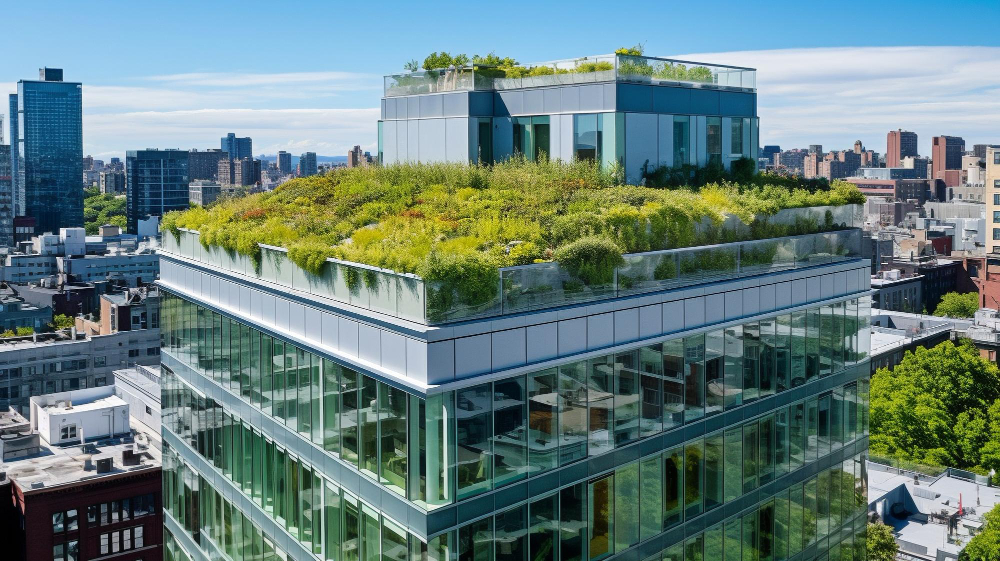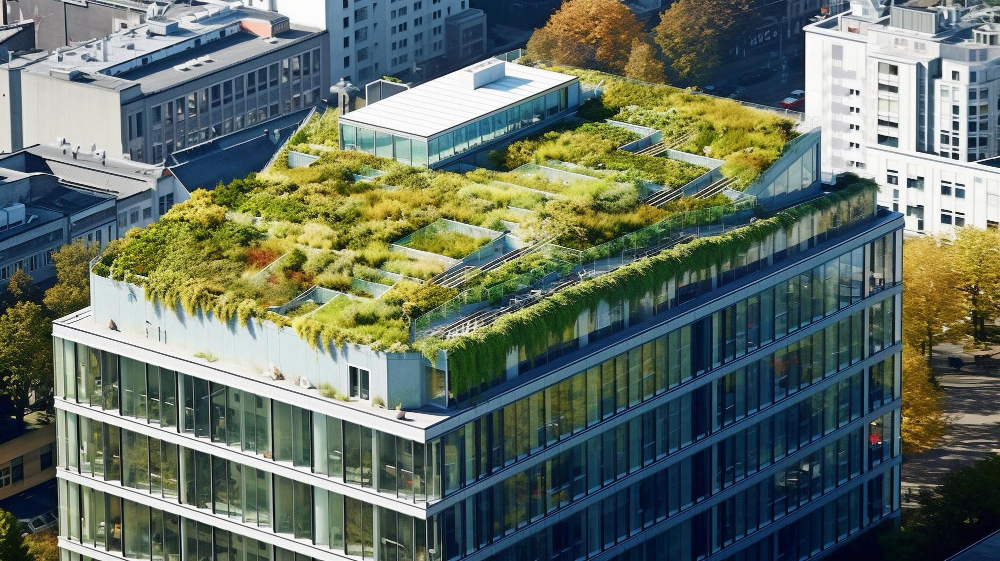Last updated on
In recent years, green roofs have emerged as a sustainable architectural trend, gaining popularity across the globe. The concept of integrating living vegetation on rooftops is not only aesthetically pleasing but also comes with a myriad of environmental and economic benefits.
As urbanization continues to rise and climate change becomes a growing concern, the adoption of green roofs has become a symbol of innovative urban design and responsible environmental stewardship. This article delves into the reasons behind the increasing popularity of green roofs, exploring the diverse advantages that make them a compelling choice for both residential and commercial buildings.
Environmental Sustainability

One of the primary reasons driving the popularity of green roofs is their significant contribution to environmental sustainability. Green roofs act as natural insulators, regulating temperature extremes and reducing the urban heat island effect. The vegetation on the roofs provides shade and helps cool the surrounding air, lowering energy consumption for air conditioning during hot summer months.
Additionally, the plants absorb carbon dioxide and release oxygen, contributing to improved air quality. The greenery also captures and filters rainwater, reducing stormwater runoff and alleviating the burden on urban drainage systems. By mitigating the environmental impact of buildings, green roofs play a crucial role in fostering ecological balance within urban landscapes.
Energy Efficiency and Economic Benefits
Green roofs offer tangible economic benefits, particularly in terms of energy efficiency. The insulation provided by the vegetation reduces the need for artificial heating and cooling, resulting in lower energy bills for building owners. Over time, the initial investment in installing green roofs pays off through energy savings and extended roof lifespan.
Additionally, green roofs can increase the property value of buildings, making them more attractive to potential buyers or tenants. The aesthetic appeal of lush greenery against the urban backdrop adds to the overall desirability of a property.
Moreover, cities are increasingly recognizing the economic advantages of green roofs, with incentives and subsidies being offered to encourage their implementation. This convergence of environmental and economic benefits positions green roofs as a viable and attractive option for environmentally conscious property owners.
Biodiversity and Urban Ecology

Beyond their ecological and economic advantages, green roofs contribute to the promotion of biodiversity and urban ecology. In densely populated urban areas where green spaces are often limited, green roofs act as miniature ecosystems, providing a habitat for various plant and animal species.
Birds, insects, and even small mammals find refuge in these elevated green spaces, creating pockets of biodiversity amidst the concrete jungle. This microcosm of nature not only enhances the overall urban ecology but also offers educational opportunities for residents.
The integration of green roofs into urban planning fosters a connection between city dwellers and the natural world, promoting environmental awareness and ecological stewardship. As cities strive to strike a balance between development and conservation, green roofs emerge as a harmonious solution that supports both urban growth and the preservation of biodiversity.
Sustainable Roofing Solutions
In the quest for sustainable construction practices, green roofs stand out as a beacon of innovation. As awareness of environmental issues grows, individuals and businesses are seeking ways to align their values with their choices, including in construction and roofing.
Opting for green roofs is not only a commitment to ecological responsibility but also a statement in favor of sustainable roofing solutions. The seasoned roofing professionals in Ohio note that integrating premium roofing services from experts specializing in green roof installations, ensures that the environmental benefits are maximized.
These services encompass expert consultation, efficient installation, and ongoing maintenance, ensuring the longevity and optimal performance of green roofs. The collaboration between environmentally conscious individuals or businesses and premium roofing services not only reinforces the commitment to sustainability but also sets a precedent for the broader adoption of green building practices in the construction industry.
This synergy between conscientious consumers and specialized services is a testament to the evolving landscape of sustainable architecture.
Climate Resilience and Adaptation
Amidst the escalating impacts of climate change, green roofs emerge as a practical solution for climate resilience and adaptation. The unpredictable nature of weather patterns, including more frequent and intense storms, poses challenges for traditional roofing systems. Green roofs, with their natural ability to absorb and detain rainwater, act as a resilient barrier against extreme weather events.
By mitigating the risks of flooding and reducing runoff, green roofs contribute to overall climate adaptation efforts in urban areas. Cities across the globe are recognizing the importance of such adaptive measures, leading to the increasing incorporation of green roofs into climate-resilient urban planning strategies.
Community and Recreational Spaces
Green roofs offer more than just environmental and economic benefits; they also serve as communal and recreational spaces within urban environments. As cities become denser, the need for accessible green spaces becomes paramount for the well-being of residents. Green roofs, when designed with community engagement in mind, transform into elevated parks, gardens, or even urban farms.
These spaces provide a retreat for city dwellers, fostering social interactions, relaxation, and a connection to nature. The incorporation of communal green roofs into building designs enhances the quality of life for residents, creating a harmonious balance between urban development and the preservation of communal spaces.
The surge in popularity of green roofs is rooted in their multifaceted advantages, from environmental sustainability and energy efficiency to biodiversity promotion and climate resilience. As cities evolve to meet the challenges of the 21st century, green roofs represent a harmonious integration of ecological consciousness into urban landscapes.
With the added dimension of premium roofing services in Ohio or any other place, the transition to green roofs becomes not only feasible but also an investment in sustainable roofing solutions. As these innovative practices gain traction, they pave the way for a future where architecture seamlessly blends with nature, creating urban environments that are not only functional but also contribute positively to the planet.
The diverse benefits of green roofs, ranging from economic savings to community well-being, position them as a transformative element in the ongoing narrative of sustainable urban development.
Table of Contents




